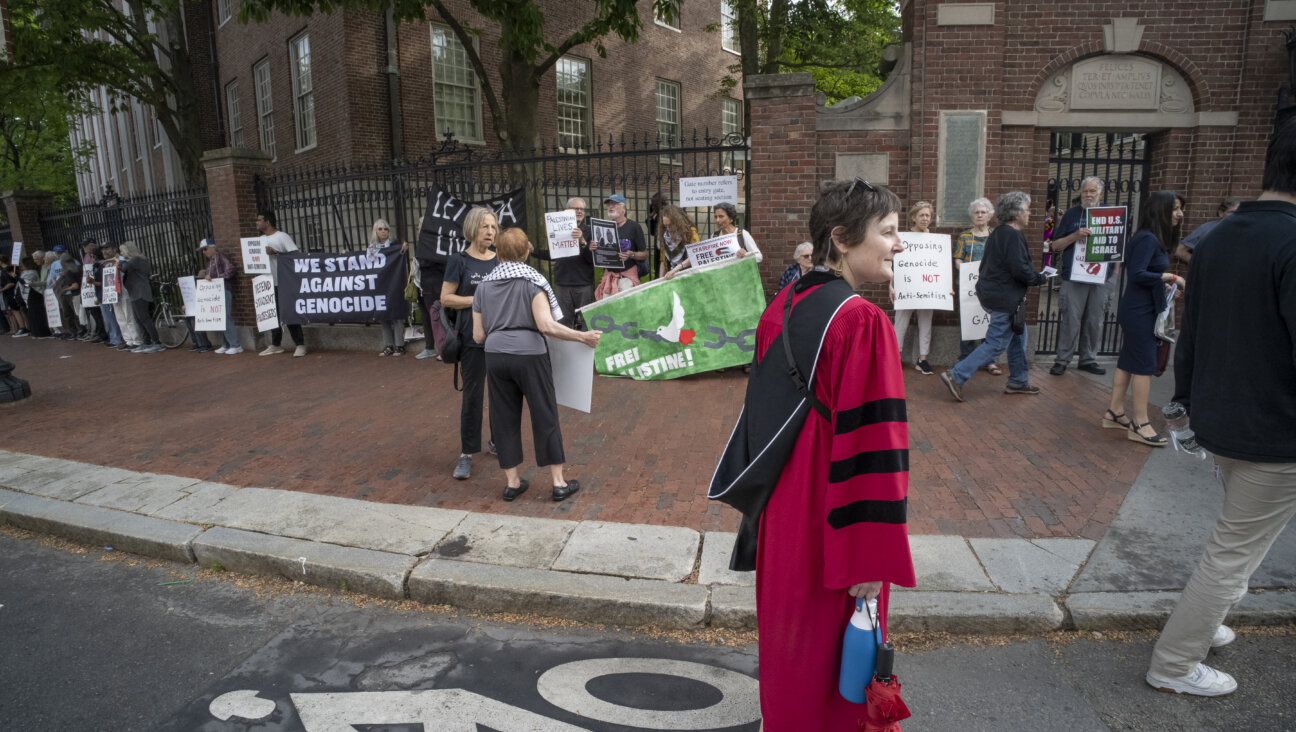The Butcher, the Baker, the Juice Bar Keep Market Alive

Graphic by Angelie Zaslavsky
A decade ago, a customer visiting Rainbo’s Fish in Manhattan’s Essex Street Market could pick a live carp from Rainbo’s tank and see it slaughtered on the spot. “You take a mallet and you hit the carp over the head,” said owner Ira Stolzenberg, a grizzled cigarette smoker with a shaved head.

Old and New: A downtown institution changes with the times. Image by Ariel Jankelowitz
The mallet didn’t survive the latest wave of gentrification to sweep the Lower East Side. “The Jewish people wanted their carp killed in front of them,” Stolzenberg said. “The younger people who were moving into the neighborhood couldn’t deal with it.”
Rather than cursing the hipsters, Stolzenberg embraced them. He converted the space once given to the carp tank into a juice bar. “It was the best thing we ever did,” he said.
The Essex Street Market, which celebrates its 70th anniversary this month, has been the scene of many such compromises. Originally a four-building complex constructed with New Deal funds to rein in the city’s rampant pushcarts, the market survives as one of those rare New York spaces where successive demographic trends intersect, and where nothing ever quite disappears.
When it first opened at the corner of Essex and Delancey streets, the market was dominated by Italian and Jewish vendors forced inside by a 1938 pushcart ban. They hated the market’s rules, according to Suzanne Wasserman, director of the Gotham Center for NYC History/CUNY Graduate Center. Those rules included a ban on hawking and, to limit haggling, a requirement that all items be pre-priced.
In the 1950s, as Spanish-speaking immigrants entered the neighborhood, the makeup of the market’s vendors began to change. Later, Korean immigrants also opened stores there. The space fell into disrepair in the 1980s, and the New York City Economic Development Corporation spent $1.5 million in renovations in 1995. Another transformation came around 2000, when the Lower East Side suddenly became the hot neighborhood for wealthy young college grads.
“Before, you don’t see that many white people around,” said Luis Batista, who runs Batista Mini Market and Batista Grocery at the south end of the market. The store was founded by his father in the late 1990s. Batista, who was born in the Dominican Republic, said that more than half of his customers are Latinos, drawn by the Caribbean fruits and vegetables he offers, including imported breadfruit. But the rest of the clientele is increasingly mixed, he said. He even carries organic foods to cater to the new arrivals.
New arrivals like Hilary Allison, 19, an undergraduate shopping for apples at the market on a recent Monday. Allison said that she buys peanut butter and soy milk at Whole Foods, the high-priced organic supermarket chain just four blocks away on Houston Street, but that she or her roommate comes here every other day for produce. She doesn’t mind forgoing Whole Foods’ local and organic fare for the market’s low prices. Anyhow, she said, “This is locally owned, even if it’s not all sustainably grown.”
Despite, or perhaps because of, the newcomers, the market cultivates a high density of only-in-New-York characters. Take Kenny Shopsin, the famously acerbic and press-averse owner of Shopsin’s General Store, a classic brunch spot with a massive menu and an idiosyncratic ban on parties of more than four people. Or the dark-haired proprietor of Aminova’s Barber Shop, a tiny joint with one ancient chair and scores of ticking clocks.
The unofficial mayor of the market, though, is Jeffrey Ruhalter, the pony-tailed fifth-generation butcher and the owner of Jeffrey’s Meat Market. Ruhalter’s family has owned a butcher shop in the market since it was built, and his father was the president of the merchant’s co-op that managed the market during the 1970s and early 1980s.
Back then, “our store looked like a biology class,” said Ruhalter. “This was a poor neighborhood. Kidneys, liver, spleen, lungs, head, feet. We didn’t even have a sirloin steak.” Ruhalter learned to work with more expensive meats during an apprenticeship at an Upper East Side supermarket. “That’s where I learned to cut porterhouse steaks,” he said.
Ruhalter knew the neighborhood had changed when a woman in a mink coat and diamond earrings walked up to his counter and asked for filet mignon. His family had never sold such expensive meat, but by the next day Ruhalter had it in stock.
It was around then that his father left the business. “He knows pig’s feet and neck bones,” Ruhalter said.
Ira Stolzenberg’s father also preceded him at the market, although his lineage is a bit less reputable. Harry Stolzenberg became a fishmonger at the behest of his brother, a small-time crook who needed a legitimate front for his numbers operation. Harry knew nothing about selling fish, but developed a knack for it, and the fake business took off for real.
Father and son moved into a booth in the Essex Street Market in the late 1970s after the booth’s original owner fell into debt with a mobster. The mobster took possession of the booth and sold half of it to Harry, who operated it on his behalf until the mobster went to jail.
At one time, Ira Stolzenberg had 14 employees. Now it’s down to just three, including Ron Budinas, Stolzenberg’s life partner, who runs the juice bar and bakes cakes for their bakery, housed across the aisle. Stolzenberg decorates the cakes. On the display counter rests a photo of two men in bondage gear holding a cake topped with a figure of a man in bondage gear.
“Some are X-rated,” Stolzenberg admitted. “We’ve got to be probably the only bakery fish store around.”
Contact Josh Nathan-Kazis at [email protected]
























